* [Important update (read me first!)](#important=update)
* [Purpose](#purpose)
* [Software needed](#software-needed)
* [Overview of steps](#overview-of-steps)
* [Detailed explanation of steps](#detailed-explanation-of-steps)
* [Step 1: disable S0](#step-1-disable-s0)
* [Step 2: install Clover to ESP](#step-2-install-clover-to-esp)
* [Step 3: disable Secure boot](#step-3-disable-secure-boot)
* [Step 4: set Clover as default](#step-4-set-clover-as-default)
* [Step 5: dump ACPI](#step-5-dump-acpi)
* [Step 6: patch DSDT](#step-6-patch-dsdt)
* [Step 7: install new DSDT](#step-7-install-new-dsdt)
* [Step 8: configure Clover](#step-8-configure-clover)
* [Step 9: Clover themes](#step-9-clover-themes)
* [Troubleshooting](#troubleshooting)
* [Battery missing](#battery-missing)
* [BSOD upon wakeup](#bsod-upon-wakeup)
* [Flashing lights while sleeping](#flashing-lights-while-sleeping)
* [Reverting changes](#reverting-changes)
* [Future work](#future-work)
<!-- Created by https://github.com/ekalinin/github-markdown-toc -->
# Important update
A much simpler method was described by @nullsvm in [this comment](https://gist.github.com/raenye/d6645d7039a6136ccfb055e0f8517698?permalink_comment_id=4391477#gistcomment-4391477), which involves modifying a UEFI variable directly using the `RU.EFI` BIOS editor.
It worked for me on X13 2021 (bios versions 412, 413, 414) and for some others ([here](https://gist.github.com/raenye/d6645d7039a6136ccfb055e0f8517698?permalink_comment_id=4394317#gistcomment-4394317) and [here](https://gist.github.com/raenye/d6645d7039a6136ccfb055e0f8517698?permalink_comment_id=4579899#gistcomment-4579899)) on X13 2022, but some 2022 owners report it doesn't work for them (see comments).
I'm keeping the original text here even though I'm not using the Clover method anymore; IMHO you should try the `RU.EFI` route before using Clover.
# Purpose
This gist documents a workaround I'm using on my ASUS GV301QE (X13 flow 2021) to replace *S0 sleep* (AKA _modern standby_ or _S0ix_) by *S3 sleep* (AKA _deep sleep_ or _suspend-to-RAM_).
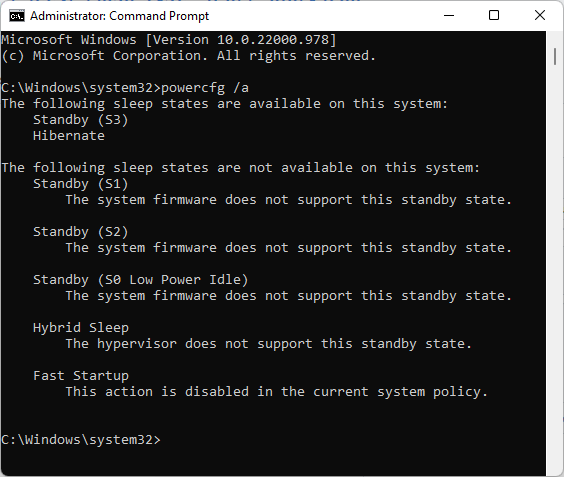
This involves modifying one of the ACPI tables, called the DSDT. The modification is not permanent - nothing is written to the firmware itself - but rather through a bootloader that loads the modified DSDT before Windows starts.
I chose to go through [Clover EFI bootloader](https://github.com/CloverHackyColor/CloverBootloader); the same can be achieved on Linux via an initrd (see, e.g., [here](https://github.com/nvllsvm/asus-flow-x13-linux)). Clover's main aim is to enable running MacOS on non-Apple systems, but we only care about its ability to load custom ACPI tables before booting Windows.
## Software needed
- [Clover](https://github.com/CloverHackyColor/CloverBootloader/releases/) - `CLOVERX64.efi.zip` is enough, I used r5149.
- [IASL compiler](https://www.acpica.org/downloads/binary-tools) - we only need `iasl.exe`
I assume you downloaded these and extracted the files `CLOVERX64.efi` and `iasl.exe` to `C:\Users\YourUserName\Downloads`.
Replace `YourUserName` here and in the instructions below with your actual user name.
# Overview of steps
1. Disable S0 sleep via Windows registry.[^s0s3]
2. Install Clover to the [ESP](https://en.wikipedia.org/wiki/EFI_system_partition).
3. Disable Secure boot in UEFI setup.
4. Set Clover as the default boot option in UEFI setup.
5. Dump current DSDT using Clover.[^dump]
6. Patch DSDT to enable S3 sleep using `iasl`.
7. Place patched DSDT in Clover's directory within the ESP.
8. Configure Clover to automatically load Windows upon reboot.
9. Optional: install a Clover theme.
With this order of steps, only two reboots are necessary :)
[^s0s3]: This is needed since S0 takes precedence over S3 when both are available.
[^dump]: Dumping must be done with Clover, since using `acpidump.exe` will get you a partially valid DSDT. Ask me how I know :P
# Detailed explanation of steps
## Step 1: disable S0
Run Command Prompt as Admin.
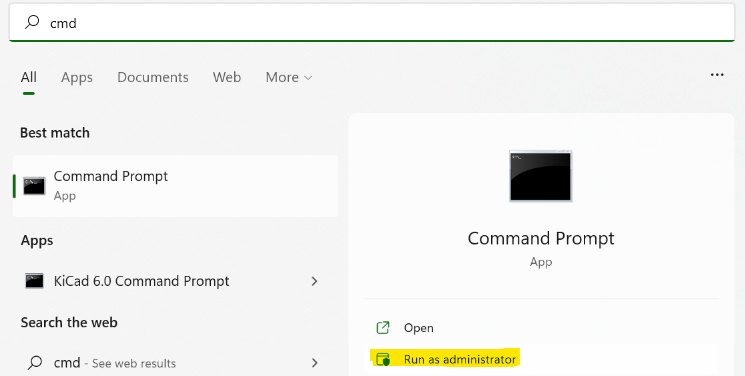
To disable S0 sleep, type in the Admin Command Prompt:
```
reg add HKLM\System\CurrentControlSet\Control\Power /v PlatformAoAcOverride /t REG_DWORD /d 0
```
Keep Command Prompt open for the next step.
## Step 2: install Clover to ESP
Mount ESP:
```
mountvol R: /s
```
Create directory structure for Clover:
```
mkdir R:\EFI\CLOVER\ACPI\Windows
mkdir R:\EFI\CLOVER\ACPI\origin
```
Install Clover:
```
copy C:\Users\YourUserName\Downloads\CLOVERX64.efi R:\EFI\CLOVER
```
~~Clover works fine even without a configuration file, but we'll install a basic one in Step 8.~~
Edit: `ACPI_BIOS_ERROR` BSODs are reported with an empty configuration file, let's do it now.
Create a basic configuration file for Clover:
```
notepad R:\EFI\CLOVER\config.plist
```
Copy and paste the following in it:
```xml
<?xml version="1.0" encoding="UTF-8"?>
<!DOCTYPE plist PUBLIC "-//Apple//DTD PLIST 1.0//EN" "http://www.apple.com/DTDs/PropertyList-1.0.dtd">
<plist version="1.0">
<dict>
<key>Boot</key>
<dict>
<key>Timeout</key>
<integer>-1</integer>
<key>Fast</key>
<false/>
</dict>
<key>GUI</key>
<dict>
<key>Scan</key>
<dict>
<key>Entries</key>
<true/>
<key>Legacy</key>
<false/>
</dict>
</dict>
</dict>
</plist>
```
## Step 3: disable Secure boot
Restart the computer, and press `Esc` to show Boot Menu.
Enter UEFI Setup (last option).

Press F7 to switch to Advanced Mode.
From the Security tab, disable Secure Boot if it is enabled:
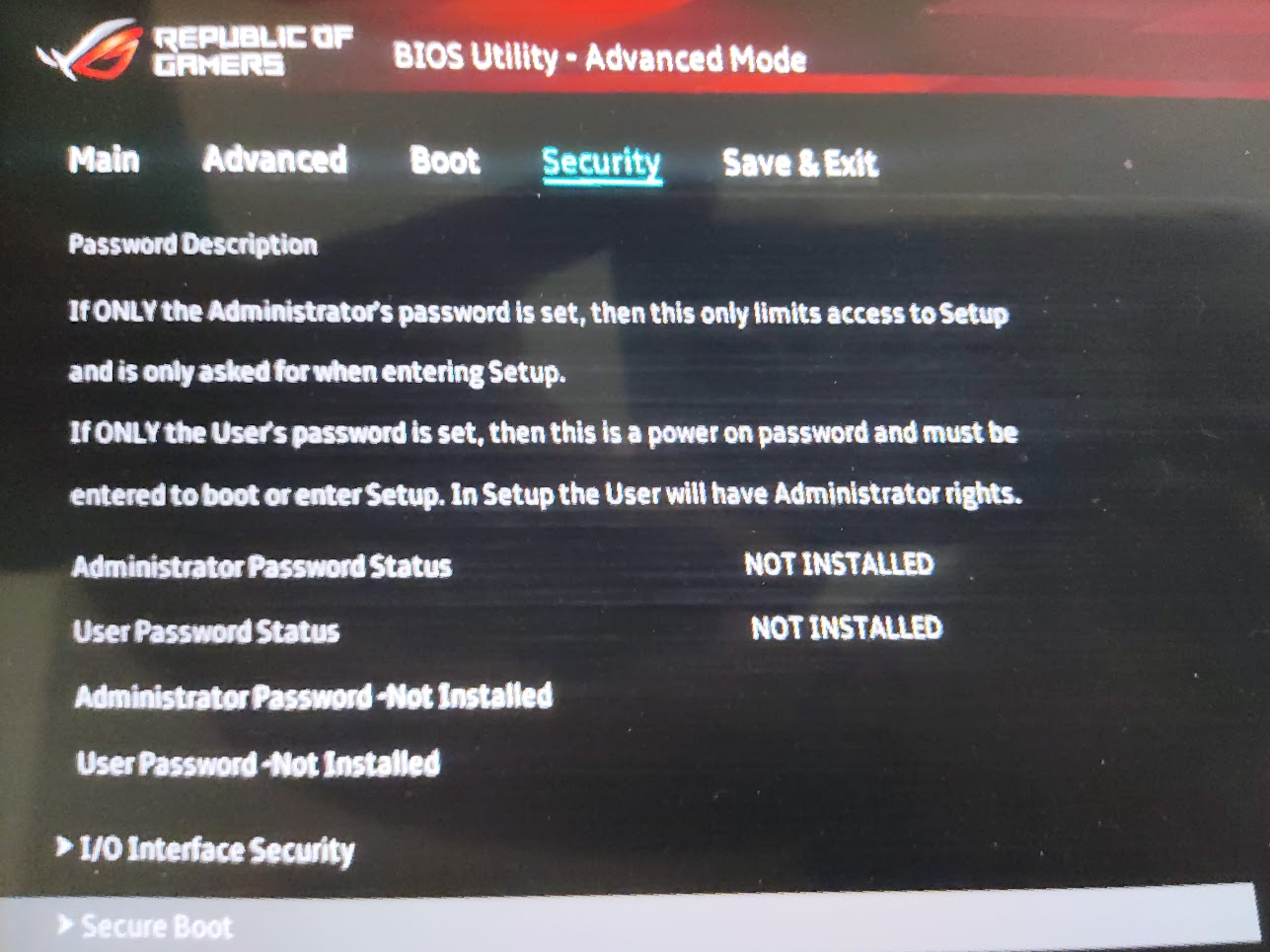
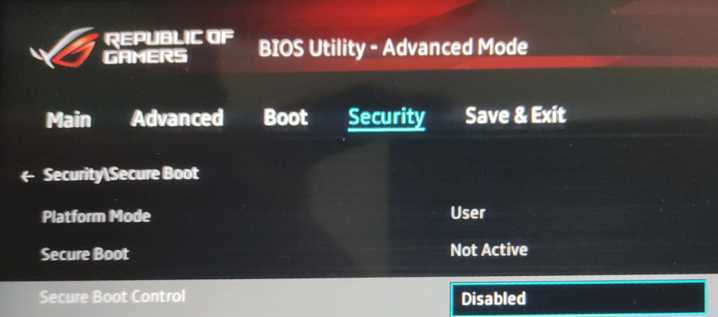
Keep UEFI Setup open for the next step.
## Step 4: set Clover as default
From the Boot tab, add a boot option for Clover:

Select Clover as Boot option #1:
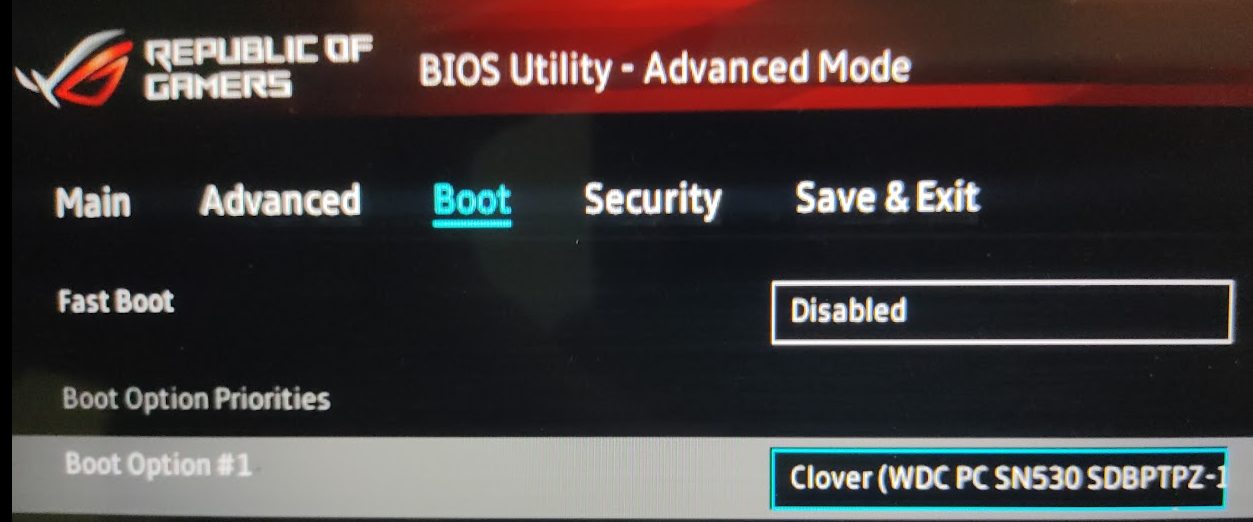
Save and exit UEFI Setup, Clover should boot.
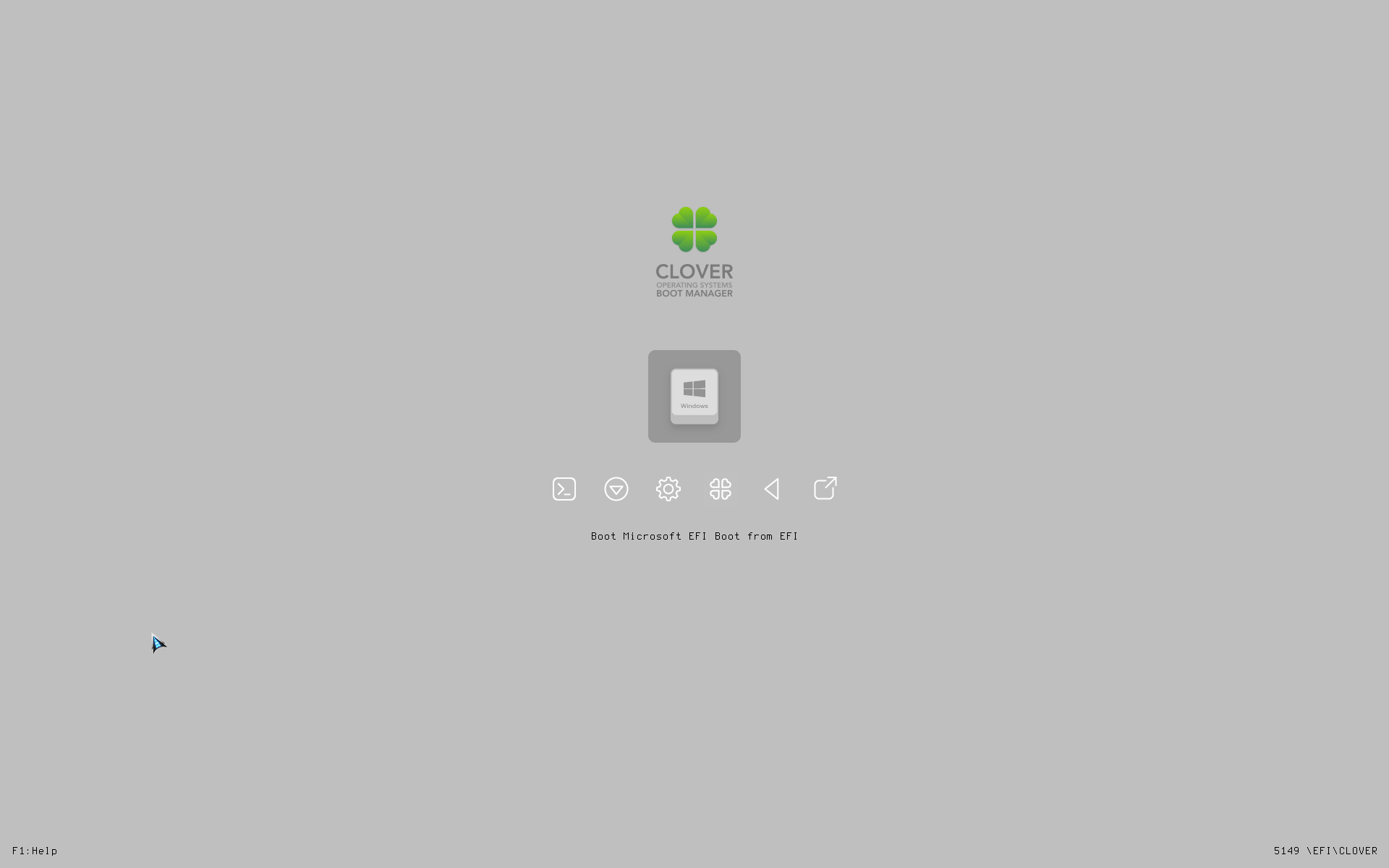
## Step 5: dump ACPI
Press F4 to dump ACPI tables.
There is no visual feedback, but Clover saves them to `EFI\CLOVER\ACPI\origin`.
Boot Windows ("Microsoft EFI Boot", usually leftmost option).
## Step 6: patch DSDT
Run Command Prompt as Admin.
To verify that S0 is disabled, type:
```
powercfg /a
```
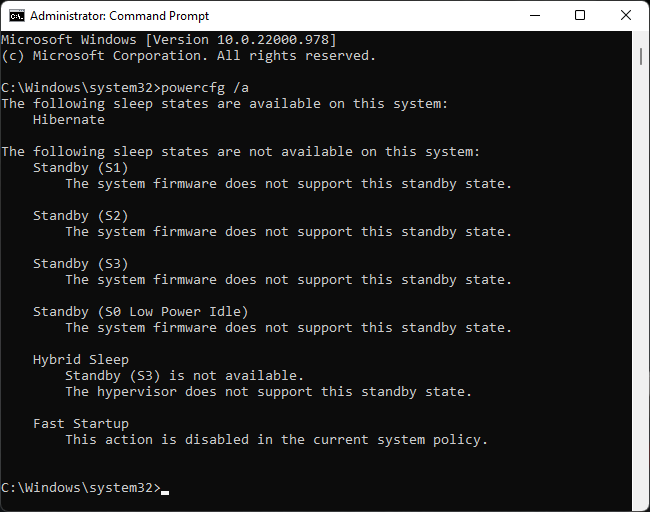
The important line is
> Standby (S0 Low Power Idle)
> The system firmware does not support this standby state.
Mount ESP and copy original DSDT to working directory:
```
cd \Users\YourUserName\Downloads
mountvol R: /s
copy R:\EFI\CLOVER\ACPI\origin\DSDT.aml .
```
Decompile DSDT using IASL and edit it using notepad:
```
iasl DSDT.aml
notepad DSDT.dsl
```
Two changes are required: bump the version and enable S3.
1. Increase the last number in `DefinitionBlock` (e.g. from `0x01072009` to `0x0107200A`):
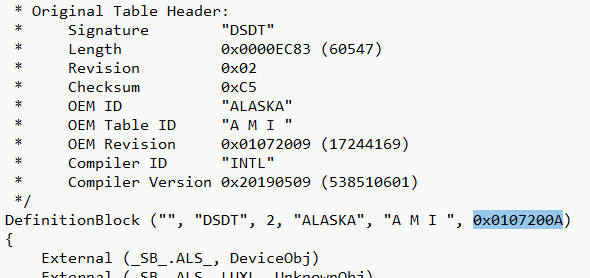
2. Search for `XS3` and change it to `_S3`:
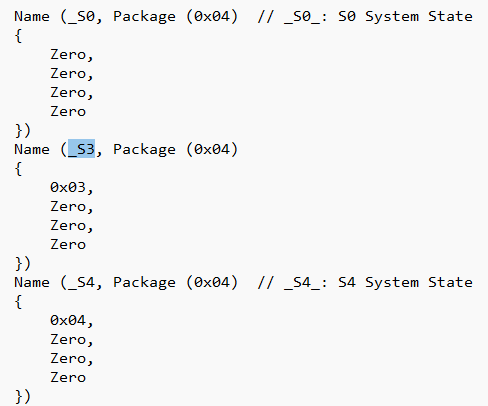
Save DSDT.dsl and recompile:
```
iasl DSDT.dsl
```
There should be warnings, but not errors.
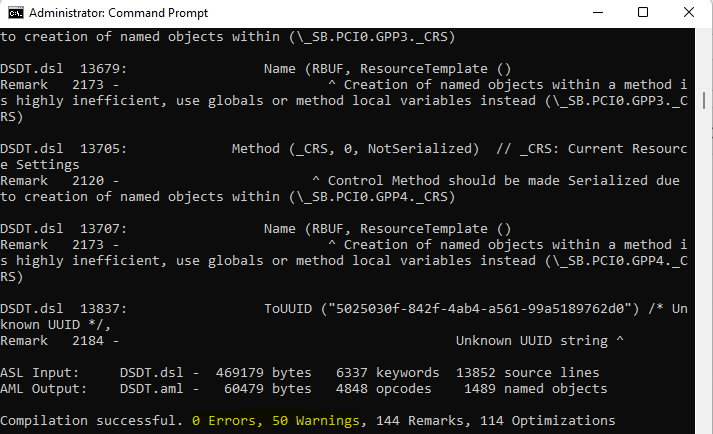
Keep Command Prompt open for the next step.
## Step 7: install new DSDT
Copy the modified DSDT to the ESP:
```
copy DSDT.aml R:\EFI\CLOVER\ACPI\WINDOWS\
```
Keep Command Prompt open for the next step.
## Step 8: configure Clover
Edit Clover's configuration file:
```
notepad R:\EFI\CLOVER\config.plist
```
Either change the `Timeout` parameter from `-1` to `2` to make Clover boot Windows in 2 seconds, or change the `Fast` parameter from `false` to `true` if you don't want to even see Clover during boot.
Save the file and reboot.
## Step 9: Clover themes
Place your favorite Clover theme in `\EFI\CLOVER\themes` and reference it in `config.plist`:
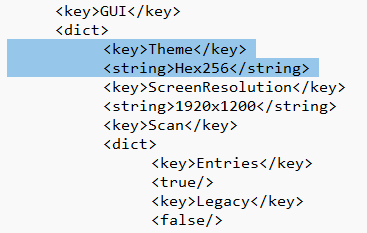
See [here](https://github.com/CloverHackyColor/CloverThemes) for a list of themes.
# Troubleshooting
## Battery missing
If S3 sleep works, but the battery is not detected, then you might have dumped the ACPI tables incorrectly.
Specifically, using `acpidump.exe` from ACPICA tools is known to create this problem.
Dump from Clover, using F4, and patch it (Steps 5-6-7).
## BSOD upon wakeup
If you get intermittent blue screens when waking up from S3 sleep, check whether the driver involved is `AMDACPBUS.SYS` (AMD Audio CoProcessor). ~~Version 6.0.0.29 was reported doing this; version 6.0.0.50 seems OK.~~
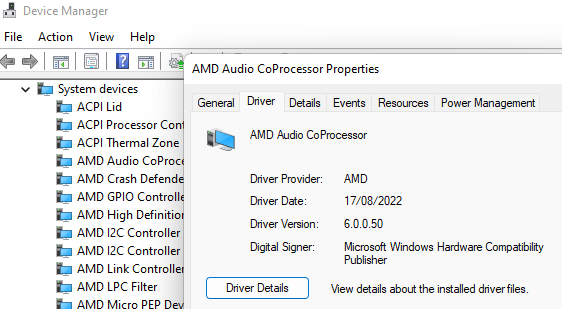
Edit: all versions of `AMDACPBUS.SYS` seem to handle S3 sleep badly. One particular annoying behaviour is that upgrading the AMD graphics driver causes a BSOD ("Driver unloaded before cancelling pending operations"). I keep this device disabled.
To fix, disable the AMD Audio CoProcessor device in Device Manager. Not idea what it actually does.
~~To fix, update the AMD graphics driver ([5800HS/5900HS](https://www.amd.com/en/support/apu/amd-ryzen-processors/amd-ryzen-9-mobile-processors-radeon-graphics/amd-ryzen-9-5900hx) or [6800HS/6900HS](https://www.amd.com/en/support/apu/amd-ryzen-processors/amd-ryzen-7-mobile-processors-radeon-graphics/amd-ryzen-7-6800h)). Maybe it also helps to install the latest [AMD chipset drivers](https://www.amd.com/en/support/chipsets/socket-fp5-mobile/amd-ryzen-and-athlon-mobile-chipset).~~
## BSOD after BIOS update
ACPI tables are stored in the BIOS, so after upgrading most likely you get partial behaviour or BSOD upon boot.
To fix, re-dump and re-patch DSDT (Steps 5-6-7). I actually had to do it twice afte upgrading to BIOS version 413 (after upgrade, I got a BSOD upon boot; after first iteration, S3 was working but battery wasn't detected; after second iteration, everything is OK).
## Flashing lights while sleeping
During S3 sleep, the power on led on the left side double-blinks. If you're annoyed by the keyboard backlight double-blinking, this can be disabled in Armoury Crate->System->Lighting->Settings:
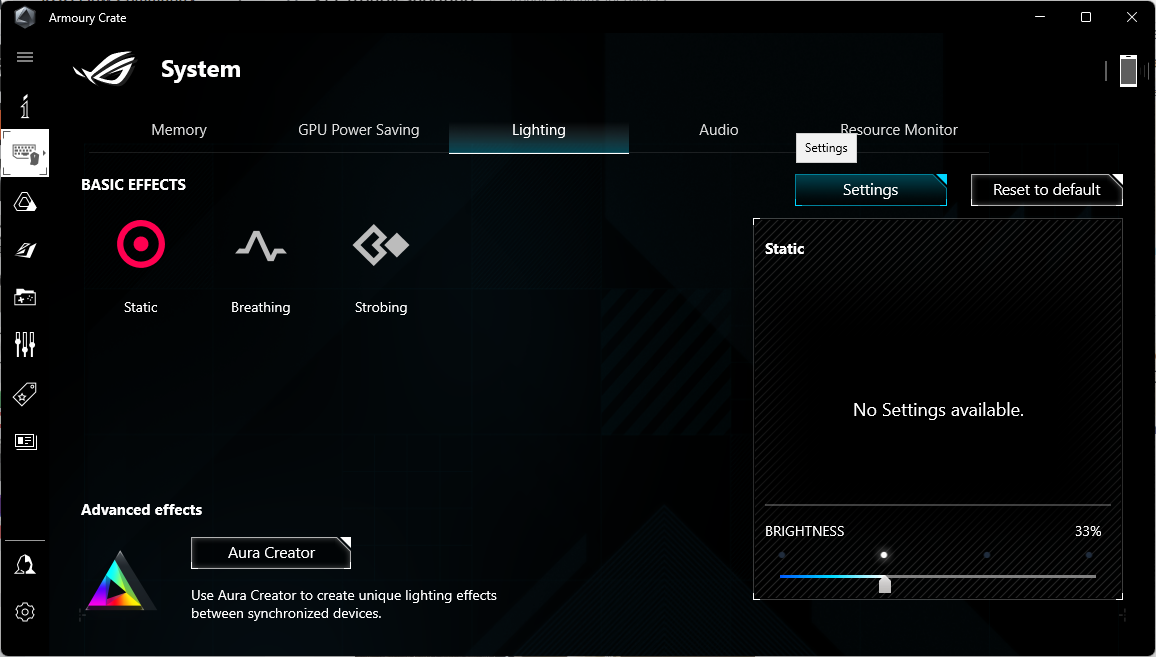
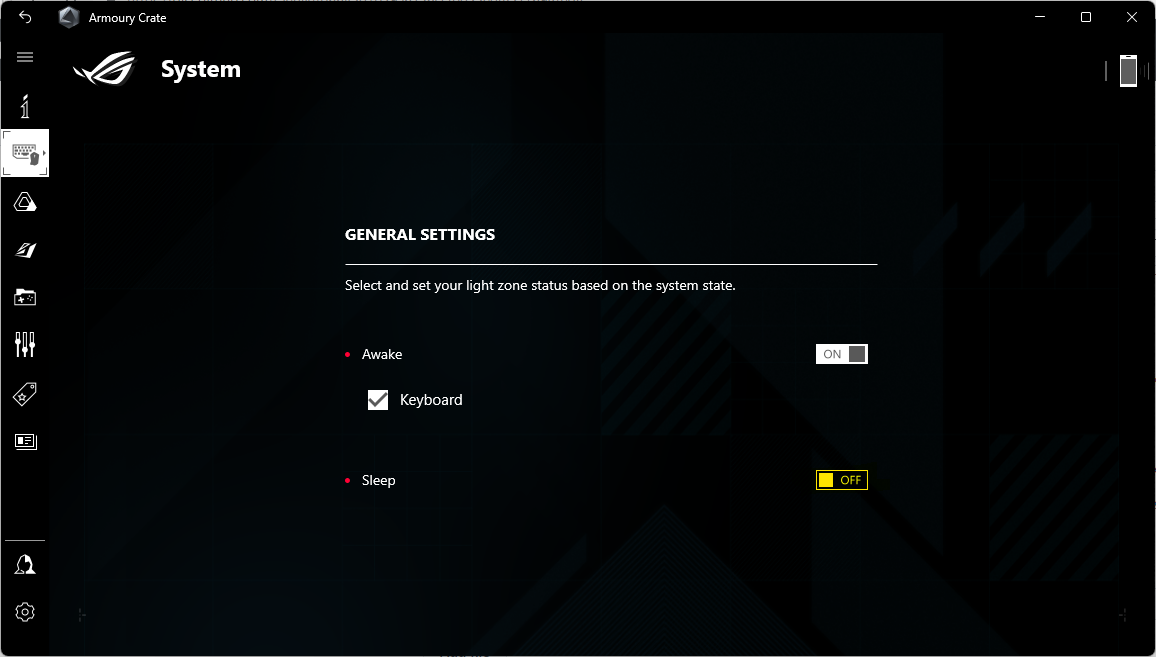
## Reverting changes
- To re-enable S0 sleep, open Command Prompt as Admin and type:
```
reg delete HKLM\System\CurrentControlSet\Control\Power /v PlatformAoAcOverride
```
- To disable Clover temporarily, choose Windows Boot Manager from the Boot menu.
- To disable Clover until further notice, enter UEFI Setup and set Windows Boot Manager as boot option #1.
- To uninstall Clover, open Command Prompt as Admin and type:
```
mountvol R: /s
del /s R:\EFI\CLOVER\
```
# Future work
- [ ] Design a proper ROG theme for Clover :)
- [ ] Understand why the ROG red logo isn't showing when Windows boots. I have it working in a slightly different Clover installation, so it must be something about the drivers or the OEM config.
Update: the OEM logo is referenced by an ACPI table called BGRT, which contains a physical memory address. Maybe this memory area is overwritten by Clover? anyway, it's possible to revert to the default Windows boot logo using `DropTables` in Clover's `config.plist`.
- [ ] Collect some more DSDTs; perhaps it's possible to provide the correct ones for each model in the `ACPI\OEM` directory and skip Steps 5-6-7.
- [X] Understand whether Clover's mechanism for DSDT patching can be used directly, which could replace Step 5 altogether.
Update: no :( since Clover's `PatchACPI_OtherOS()` function only supports loading ACPI tables from `.aml` files and the `DropTables` command.